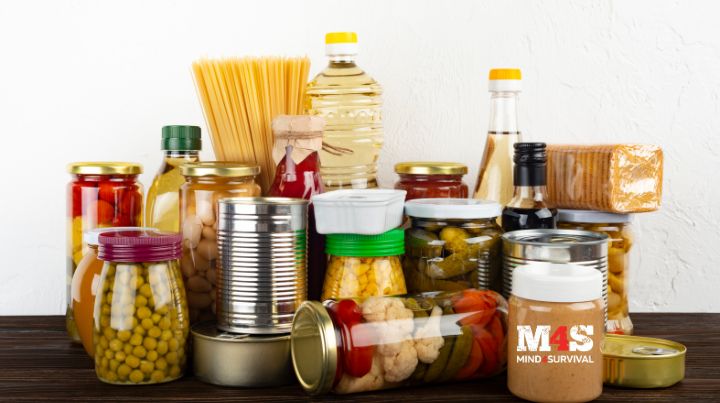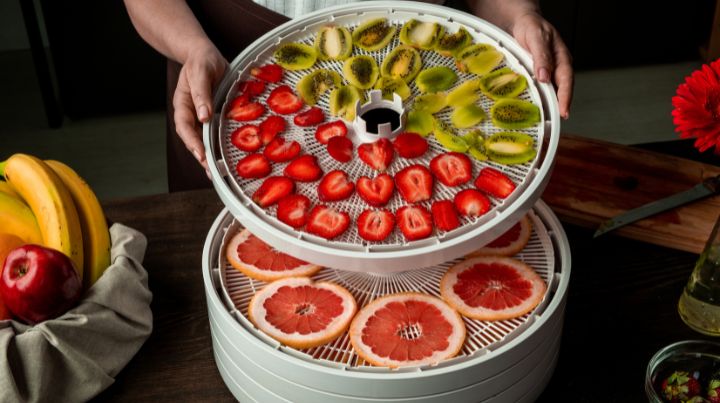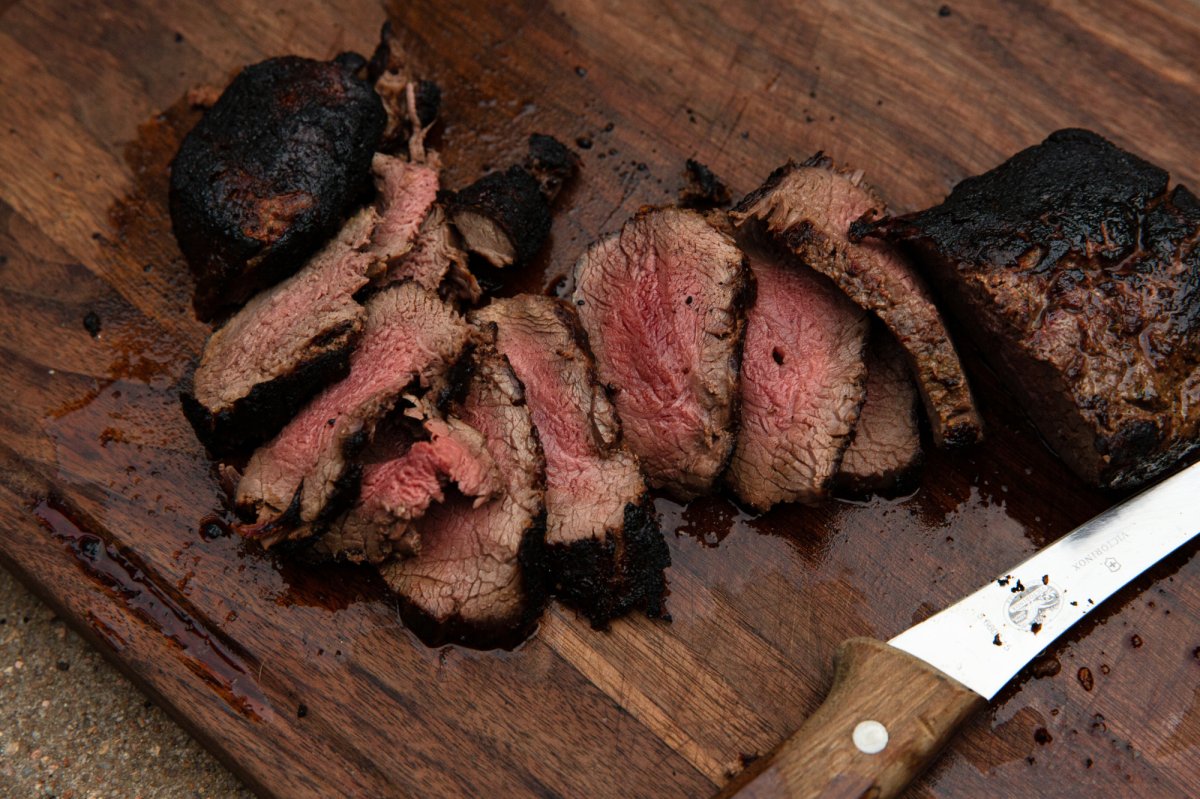Food Storage for Beginners – Mind4Survival

Being able to feed your family during bad times is arguably one of the chief concerns of anyone who begins to venture down the preparedness path. It might even be the impetus to get the ball rolling in the first place.
There are many reasons why you might be forced for a period of time to rely upon whatever food you have stockpiled, including:
- Job loss or other budgetary issues
- Long-term power outage
- Store closures
- Supply chain interruption
With that in mind, where do you begin? Well, let’s start with what you shouldn’t do, and that’s run out to buy several cases of military rations or freeze-dried “survival” food. Not only are these products expensive, but they aren’t the greatest for nutrition or digestion when they’re the primary source of food for long periods of time.
Here are some better options, especially for beginners.
Quick Look at What You’ll Learn
First Things First
Something to keep in mind is that in most situations, food doesn’t just instantly go bad when a disaster hits. The contents of the refrigerator and freezer will remain viable for a bit, though the clock does start ticking when the power goes out. All things being equal, the food in the fridge will be okay for about four hours before it starts to turn. The USDA suggests that eggs, milk, and meat should be tossed after two hours above 40F. If you have the ability to do so, cooking what you can and eating it, maybe sharing it with neighbors, is better so it doesn’t all just go to waste.
The food in the freezer will be okay for about 24 hours. Keep the freezer closed so as to trap the cold inside as best you can. You could even toss a comforter over it to help insulate it more. Pro tip: As a matter of routine, fill 2L soda bottles with clean water, leaving a couple of inches of head space, and toss them into the freezer. Not only will these help keep your food cold longer during a power outage, but they’re also a good way to store a little more water for emergencies.
Grocery Store Fare
Rather than ordering specially packed foods that are marketed to preppers and survivalists, head down to your local supermarket.
“Store what you eat and eat what you store” is a common saying in the prepper world. What it means is that you should focus on foods that you and your family eat regularly and that are also shelf-stable and have long storage lives. The advantages here are that you know your family won’t turn their nose up at the foods being offered, and there’s little chance of digestive upset, as there might be when you introduce new foods to the diet.
Rice
Rice and beans are staples in the survivalist meal plan. Both are filling and fairly cheap. When eaten together, they form a complete protein and provide the body with necessary amino acids. Beans are packed with nutrients, including iron and potassium, and are a great fiber source. I recommend storing a variety of beans, including pinto and kidney.
As for rice, there are hundreds of varieties. When it comes to white rice versus brown rice, the difference is more than just color. White rice has had the outer husk and bran layer removed, leaving just the grain. Brown rice is unpolished. All other things being equal, white rice will last longer on the shelf because the bran layer retains a bit of oil that can go rancid over time.
Canned Goods
Canned goods are another great option. Soups and stews can be a way to provide a fairly complete meal without much effort. When push comes to shove, they can be eaten cold, though thoroughly heating them improves the taste quite a bit.
Obviously, vegetables, fruit, and even meat are all available in the canned goods aisle. The downside to all of them is their weight and bulk. You will not want to rely upon them if you need to evacuate. But if you and your family are hunkering down at home to weather the storm, so to speak, they’ll do the job of keeping bellies full.
Don’t overlook pouched meats, either. Tuna, chicken, and even beef are available in this sort of packaging. They can be easier to store, as they take up less space, and they’re also lighter than their canned counterparts.
Shelf-Stable Mixes
Dry soup mixes are another option. We like the Shore Lunch brand, but there are plenty of others as well. They require a fair bit of water, upwards of 8 cups, but they also make quite a lot of soup, easily enough for a family of four.
Baking mixes are a good way to add some variety and carbs to the post-disaster diet. Look for the just-add-water varieties. You can use these mixes to make biscuits, dumplings, pancakes, and more.
One of my favorite comfort foods is mashed potatoes and gravy. While instant potatoes aren’t nearly as good as homemade, they’ll do in a pinch. Several flavors of instant mashed potatoes don’t require anything other than hot water to prepare. Gravy mix is cheap, too.
Does it get much easier than tossing some pasta noodles into a pot of boiling water and then heating up some jarred sauce? Dry pasta comes in a huge array of choices for shapes and sizes. Sauces are also available in a range of flavors.
Don’t overlook the need for spices and other ways to enhance foods and flavors, such as salt, pepper, garlic powder, and the like. Many condiments, like ketchup and barbecue sauce, will last a year or more on the shelf if left sealed.
Home Preserved
Take the time to learn how to can and dehydrate food yourself. This can dramatically increase your options for storing calories for later consumption. When you find a great deal at the grocery store, you can take full advantage of it by using these skills and tools to set some of it aside for the future.
Home-preserved food tends to be pretty healthy, given that you control the amount of salt, sugar, and other ingredients. While equipment such as a pressure canner, jars, and lids must be purchased, you’ll save money in the long run.
Recently, freeze dryers have become available for home use. They’re expensive and require a small amount of counter space. But most people have been very happy with the amount of food they’ve been able to stockpile in a short amount of time using one. Some people have even branched into small-scale production, where neighbors, friends, and family will provide the food for the owner to process for them for a small price. Others have started outright selling freeze-dried foods, especially candy. Any profits from such endeavors could be put toward additional preps.
How Much to Store?
That’s the million-dollar question, yeah? One way people approach the problem is menu planning. Grab a sheet of paper and write out menus for two full weeks. Breakfast, lunch, dinner, and snacks for each day. Break each meal down into individual ingredients and quantities as best you can. Concentrate on shelf-stable foods, of course.
Once you have everything calculated for two weeks, it’s simple math to extrapolate that out for a month, two months, or longer. If nothing else, going through this exercise will give you a good idea of how much food your family really eats. Granted, many of us probably eat far more than we truly need, but let’s not plan on a disaster providing us with a diet and exercise regimen.
Few people have the space to store a year’s worth of food. But that doesn’t mean you should just toss your hands into the air and give up. If we’re being realistic, you’re far more likely to experience a temporary crisis than you are a truly world-altering event that lasts months or even years.
Read the full article here










